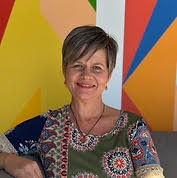
There’s a rapidly growing area of impact investing, with women leading this transformation: investments that generate social and environmental impact alongside a financial return.
Sustainable investing has come to embrace a variety of approaches, from funds that use ESG (environmental, social and governance) information to help inform their investment decisions to those that broadly integrate ESG throughout the investment process. Other funds focus on specific sectors such as renewable energy.
Then there’s the fast-growing area of impact investing: investments made with the intention of generating social and environmental impact alongside a financial return. Impact investors range from banks, pension funds, financial advisors, and wealth managers to institutional and family foundations, government investors, and development finance institutions. The impact investing market is currently estimated at $502 billion, according to the Global Impact Investing Network (GIIN).
These investors are increasingly seen as contributing vital private sector capital to the $2.5 trillion annual investment gap that developing countries face to meet the U.N. Sustainable Development Goals (SDGs) by 2030.
That’s the intention of the $150 million initiative launched in March by the John D. and Catherine T. MacArthur Foundation in collaboration with The Rockefeller Foundation and Omidyar Network. The program’s goal is to unlock billions, or even trillions, of further investment into solutions that achieve the SDGs by providing catalytic capital, which the MacArthur Foundation describes as capital “that is patient, risk-tolerant, concessionary, and flexible,” unlike conventional capital that aims for market-rate returns.
“Impact investing is definitely growing in strength,” says Catherine Berman, co-founder and CEO of CNote, a financial platform that directs every dollar invested toward funding female- and minority-led small businesses, as well as affordable housing and economic development in financially underserved communities across America. “More investors feel comfortable to talk about these issues as part of the investment landscape and we are seeing more investment in the area. When we think about closing the wealth gap it is hard not to think about issues like women’s equality and racial injustice.”
Yet she wouldn’t call impact investing a mainstream movement yet. “I have not seen a lot of specific dollars from mainstream investors going towards addressing these social issues,” Berman says. “It could be that there is not a pool of products available, and that could be an opportunity to address the challenge. What we find is that these ideas get incubated in the impact investing space and then are adapted by the mainstream investors. We have seen that for example in the environmental area, with green bonds.”
The profile of sustainable investors is also shifting, to more women leading the movement. Women control $14 trillion in personal wealth in the U.S., according to a study by BMO Wealth Institute, and they are a driving force using that money toward impact investing. According to a Morgan Stanley study, 84 percent of women expressed interest in sustainable investing, compared to 67 percent of men.
In the last couple of years, more women-focused and women-led impact investing and venture funds have come to market to respond to that demographic. That includes CNote; the digital-first, mission-driven investment platform Ellevest, and COIN, a “conscious” stock account offered by financial services firm John Hancock. All three seek to democratize impact investing.
“It’s all about access,” says COIN CEO Megan Schleck. “We talk about conscious investing rather than impact investing because we recognize not everyone has the ability to launch a new fund or start a wind farm. We wanted to create something that was accessible to anyone who wanted more choices on how their investments were made.”
On the COIN platform, an investor with as little as $50 can open an account and choose to invest their money in one of eight impact areas, such as clean water, gender equality, shared prosperity, climate action and better health.
“A few years ago, if you had Googled ‘gender investing gap,’ there was nothing there,” says Sallie Krawcheck, CEO of Ellevest. “It wasn’t discussed. The conversation would revolve around how women needed to change. But in our view, there’s nothing wrong with women. It’s the product that needs to change to get her comfortable investing. It’s about stepping back and recognizing how very male the industry is. It’s no coincidence that the industry symbol is a bull.”
More than the symbol may need to change as women become the largest beneficiaries of the $30 trillion intergenerational wealth transfer over the next 25 years, from the Boomers born between 1946 and 1964 and their heirs, those born in the late 1960s and later.
Younger generations of women are poised to accelerate the movement, with 90 percent of millennial women likely to say social and environmental causes and issues are very important to them and drive much of what they do, according to Green Money Journal. Swell Investing found that the vast majority of Millennials and Gen Z they surveyed last year already did or were planning to invest sustainably.
Image credit: Pexels

Based in Florida, Amy has covered sustainability for over 25 years, including for TriplePundit, Reuters Sustainable Business and Ethical Corporation Magazine. She also writes sustainability reports and thought leadership for companies. She is the ghostwriter for Sustainability Leadership: A Swedish Approach to Transforming Your Company, Industry and the World. Connect with Amy on LinkedIn and her Substack newsletter focused on gray divorce, caregiving and other cultural topics.














